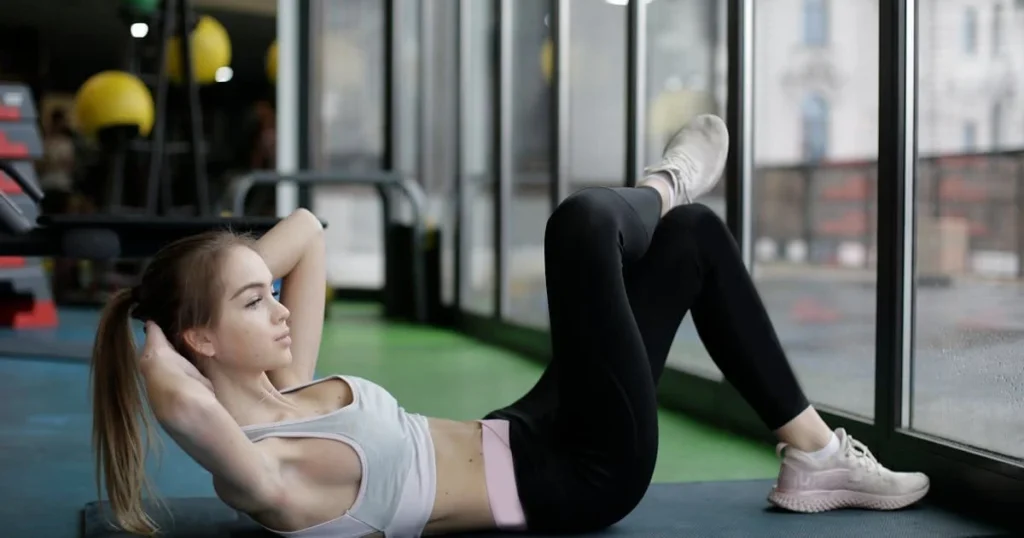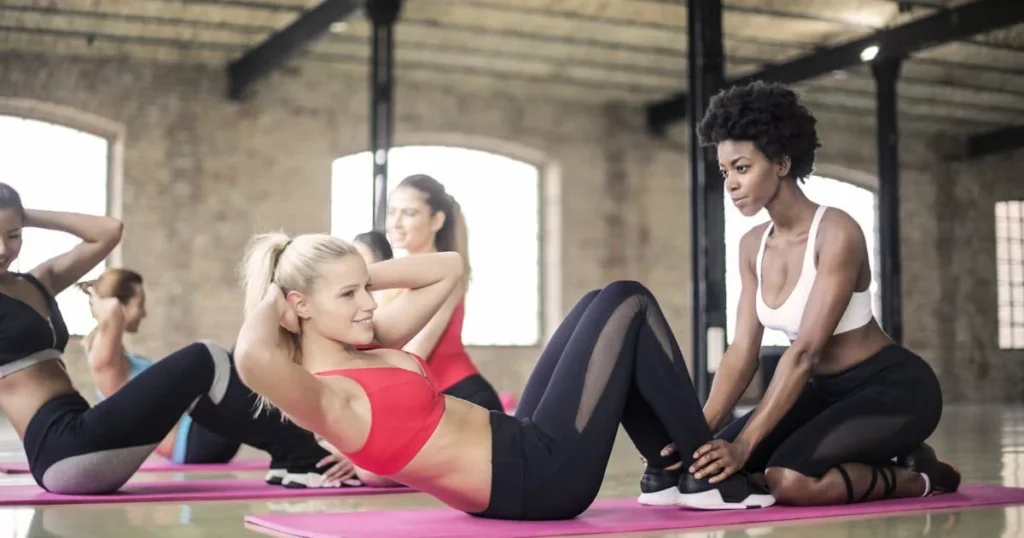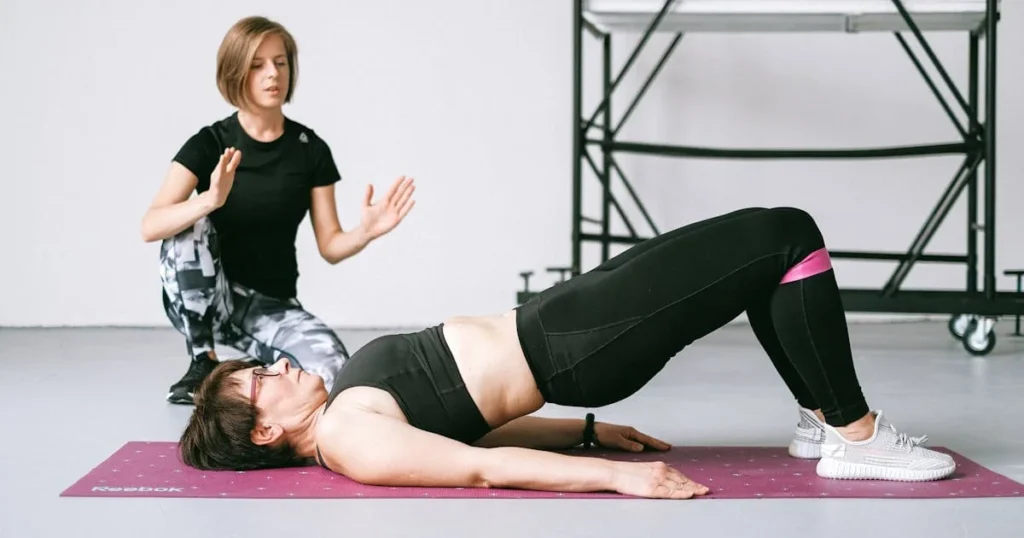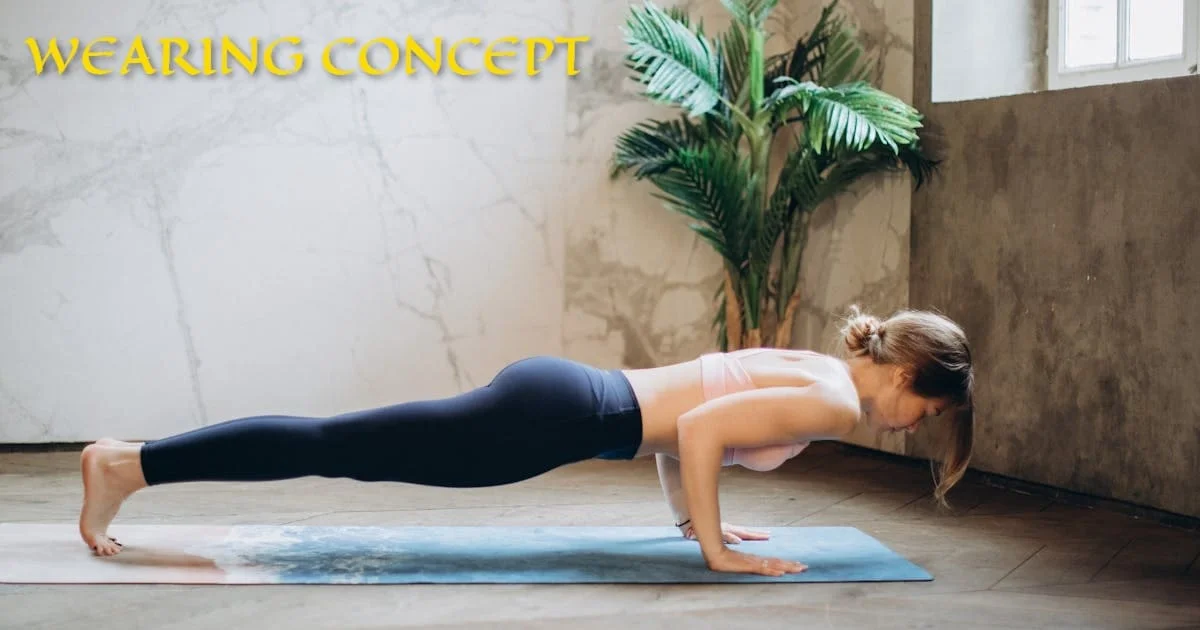If you’re new to yoga, deciding what to wear can feel like a daunting task. The good news is that there are no strict rules when it comes to yoga attire for beginners. However, choosing the right clothing can enhance your practice and make you feel more comfortable and confident on the mat.
The most important factor to consider when choosing yoga clothes for beginners is comfort. Yoga involves a lot of stretching, bending, and twisting, so you’ll want to wear clothes that allow you to move freely without feeling restricted or self-conscious.
Tops

- Look for tops made from breathable, stretchy materials like cotton, bamboo, or moisture-wicking fabrics.
- Tank tops, t-shirts, or sports bras are all good options for yoga.
- Avoid loose, baggy tops that may fall over your head during inversions or forward folds.
Bottoms
- Leggings or yoga pants are ideal for yoga as they allow for maximum mobility.
- Look for bottoms with a wide waistband or drawstring to prevent them from falling down during your practice.
- Shorts or capri-length pants can also work for yoga, but make sure they’re not too loose or restrictive.
Layering for Comfort
Depending on the room temperature and your personal preferences, you may want to consider layering your yoga attire.
Layering Options
- Wear a lightweight long-sleeved top or jacket over your tank top for warmth.
- Bring a pair of sweatpants or joggers to wear over your leggings before or after your practice.
- Have a cozy hoodie or wrap on hand to stay warm during the cool-down or meditation portion of your class.
What shoes should you wear for yoga?
Most yoga studios and instructors recommend practicing yoga barefoot or wearing yoga socks with grips on the bottom. Bare feet provide the best traction and stability on the mat, allowing you to grip the floor and maintain balance during poses.
However, if you prefer to wear socks, look for ones specifically designed for yoga. These socks have sticky grips or textured bottoms that prevent slipping and sliding on the mat.
When Shoes Might Be Necessary
In some cases, you may need to wear shoes for yoga, such as:
- If you’re practicing outside or in a studio with a rough or uneven floor
- If you have foot conditions or injuries that require extra support or protection
- For certain types of yoga, like heated or hot yoga, where shoes can provide extra traction on a sweaty mat
In these instances, opt for lightweight, flexible shoes with thin soles and good traction, such as:
- Yoga shoes or studio shoes designed specifically for yoga practice
- Barefoot-style shoes or minimalist running shoes with a flexible, non-marking sole
Can you wear regular clothes for yoga?
While it’s possible to wear regular clothes for yoga, it’s generally not recommended, especially as a beginner. Regular clothes like cotton t-shirts, sweatpants, or jeans are often too loose, restrictive, or absorbent, which can hinder your practice and make you feel uncomfortable.
Why Yoga-Specific Clothing is Better
Yoga clothes are designed with specific features that make them more suitable for the practice:
- Stretchy, breathable fabrics that allow for maximum mobility and moisture-wicking
- Fitted silhouettes that stay in place during inversions and movements
- Minimal seams or embellishments that could irritate the skin during poses
- Compression or support in key areas like the waist, hips, and chest
Exceptions for Regular Clothes
While not ideal, there may be some instances where wearing regular clothes for yoga is acceptable, such as:
- During a beginner’s first few classes before investing in dedicated yoga attire
- For a gentle, restorative, or chair yoga class where you won’t be doing any strenuous movements
- If you’re practicing at home and don’t have yoga clothes on hand
In these cases, opt for loose, lightweight, and stretchy clothes that won’t restrict your movement or cause discomfort.
Is it okay to wear leggings for yoga?
Absolutely! Leggings are one of the most popular and practical choices for yoga attire, especially for beginners.
Benefits of Wearing Leggings for Yoga
Leggings are made from stretchy, form-fitting materials like spandex or elastane blends, which allow for a full range of motion during yoga poses and sequences.
Coverage and Support
Leggings provide full coverage for the legs, helping you feel more confident and secure during various poses, especially those that involve inversions or forward folds.
Moisture-Wicking and Breathability
Many leggings are made from moisture-wicking fabrics like polyester or nylon, which help keep you dry and comfortable during your practice by drawing sweat away from the body.
Variety of Styles and Lengths
Leggings come in a variety of styles and lengths, from capri to full-length, allowing you to choose the option that best suits your personal preferences and the type of yoga you’ll be practicing.
Tips for Choosing Yoga Leggings
- Look for leggings made from stretchy, moisture-wicking fabrics like polyester, nylon, or elastane blends.
- Consider a high-waisted or compression style for added support and to prevent the leggings from rolling down during your practice.
- Opt for a fabric with a gentle compression or sculpting effect if you prefer a more streamlined look.
- Choose a longer length if you’ll be practicing inversions or if you prefer more coverage.
- Consider leggings with a gusset or diamond-shaped panel in the crotch area for added mobility and comfort.
What should you not wear for yoga?

While yoga is a relatively low-maintenance activity in terms of attire, there are certain types of clothing that are best avoided, especially for beginners.
Loose or Baggy Clothing
Loose, baggy clothes like sweatpants, oversized t-shirts, or hoodies can be problematic for yoga. These items can:
- Get in the way during poses, potentially causing you to trip or become tangled
- Make it challenging to see proper body alignment, which is crucial for beginners
- Expose more skin than intended during certain poses or movements
Exceptions for Loose Clothing
There may be some exceptions where loose clothing is acceptable for yoga, such as:
- During a gentle or restorative yoga class where you won’t be doing many active poses
- If you’re practicing at home and prioritizing comfort over form
- If you plan to layer loose items over tighter yoga attire for warmth
Rigid or Restricting Clothing
Clothing items that are overly rigid or restrictive, such as jeans, khakis, or heavily structured tops, can significantly limit your mobility and range of motion during yoga.
Problems with Rigid Clothing
- Denim, khaki, or heavily structured fabrics don’t allow for the necessary stretch and movement in yoga poses
- Thick seams or embellishments can dig into the skin or cause discomfort during certain poses
- Restrictive clothing can prevent proper breathing and alignment, which are essential for beginners
Inappropriate or Uncomfortable Footwear
As mentioned earlier, most yoga practices are done barefoot or in yoga socks with grippy bottoms. Wearing shoes, especially those with thick soles or poor traction, can be unsafe and hinder your practice.
Exceptions for Footwear
There may be some instances where shoes are acceptable or even necessary for yoga, such as:
- If you have a foot condition or injury that requires support or protection
- If you’re practicing outside or on a rough, uneven surface
- For certain types of yoga, like heated or hot yoga, where shoes can provide extra traction
In these cases, choose lightweight, flexible shoes with good traction and minimal cushioning or support.
What do I need to bring to my first yoga class?
Attending your first yoga class can be exciting and a bit nerve-wracking, especially if you’re unsure about what to bring. Here’s a checklist of essential items to pack for your first yoga experience:
Yoga Mat
A yoga mat is the most crucial item you’ll need for your practice. It provides a non-slip surface for you to perform poses safely and comfortably.
Mat Considerations

- If you don’t have your own mat yet, most studios rent or lend mats for a small fee.
- Consider investing in a high-quality mat with good grip and cushioning once you’ve committed to a regular yoga practice.
- Opt for a mat that’s long enough to accommodate your full height when lying down.
Water Bottle
Staying hydrated is essential, especially if you’re practicing a more vigorous style of yoga like power or vinyasa flow.
Water Bottle Tips
- Bring a reusable water bottle filled with water or an electrolyte-replenishing beverage.
- Look for a bottle with a secure, leak-proof lid to avoid spills on your mat.
- Consider a bottle with a built-in straw or spout for easy drinking during class.
Towel
A small towel can come in handy for wiping away sweat or providing extra cushioning for your knees or head during certain poses.
Conclusion
Choosing the right attire for your yoga practice as a beginner can make a significant difference in your comfort, confidence, and overall experience on the mat. By following the guidelines outlined in this article, you’ll be well-equipped to select clothing that allows for maximum mobility, breathability, and freedom of movement.
Remember, the most important factors to consider are comfort and functionality. Opt for stretchy, moisture-wicking fabrics that move with your body, and don’t be afraid to experiment with different styles and layering options to find what works best for you.
As you continue your yoga journey, you may discover personal preferences or needs that require specialized clothing, such as items designed specifically for hot yoga or outdoor practice. Embrace this process and treat your yoga wardrobe as an ever-evolving collection that supports your growth and evolving practice.
Above all, remember that what you wear on the mat is far less important than the dedication and mindfulness you bring to your practice. With the right mindset and a comfortable, functional yoga wardrobe, you’ll be well on your way to a fulfilling and rewarding yoga experience.
FAQs
Here are some frequently asked questions given below:
Do I need to buy expensive yoga clothing as a beginner?
Not necessarily. While investing in high-quality yoga attire can be beneficial in the long run, you can start with budget-friendly options until you determine if yoga is something you want to commit to regularly. Look for affordable brands or shop at athletic or discount stores for basic leggings, tanks, and tops.
Is it okay to wear loose-fitting clothes for yoga?
While not ideal, loose-fitting clothes like sweatpants or oversized t-shirts can be worn for gentle or restorative yoga classes, or if you’re practicing at home. However, for more active styles of yoga, loose clothing can be restrictive and get in the way during poses, so form-fitting, stretchy attire is recommended.
Can I wear socks or shoes during yoga class?
Most yoga studios and instructors prefer that students practice barefoot or wear sticky-bottomed yoga socks for better traction and stability on the mat. Shoes are generally not recommended, except in certain cases, such as outdoor yoga, hot yoga (for added grip), or if you have a foot condition that requires support.
How often should I wash my yoga clothes?
It’s generally recommended to wash your yoga clothes after every practice, especially if you’ve worked up a sweat. Moisture-wicking fabrics tend to absorb odors quickly, so washing them regularly will keep them fresh and hygienic.
Can I wear shorts or cropped leggings for yoga?
Absolutely! Shorts or cropped leggings can be a comfortable and practical option for yoga, especially in warm weather or heated classes. Just make sure they’re made from stretchy, breathable fabrics and provide enough coverage for your personal comfort during various poses and movements.
